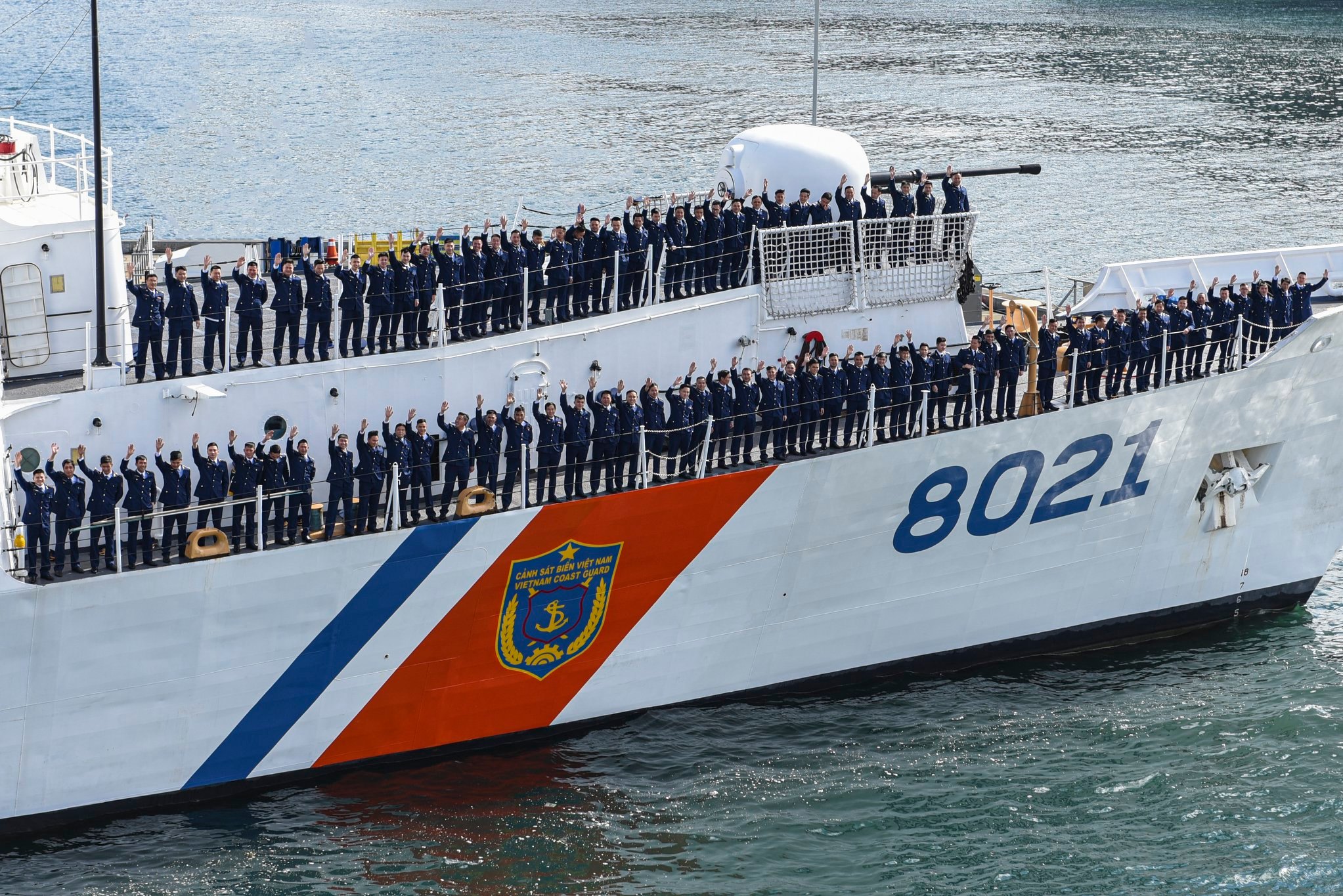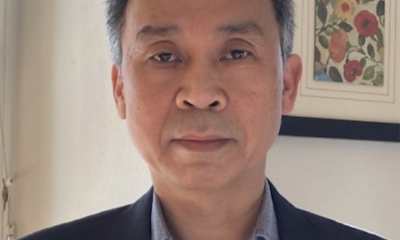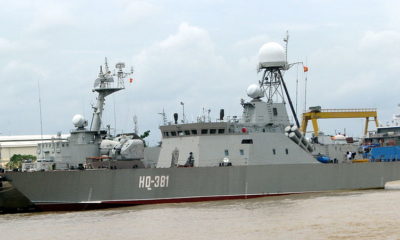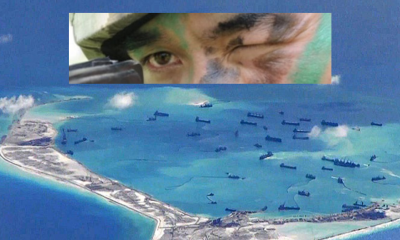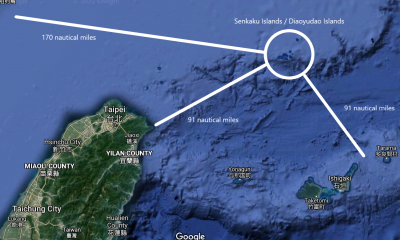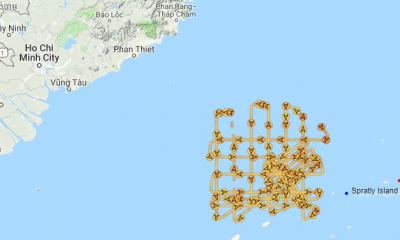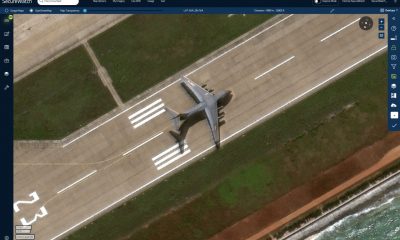(The United States transfers a Seattle-based Coast Guard ship to Vietnam in summer 2021. Source: VNExpress)
Khang Vu
To describe developments in United States-Vietnam relations in the past quarter of a century, scholars and policymakers often use the phrase “from enemies to friends.” Indeed, this characterization is not without a firm basis. Hanoi and Washington found one another on the opposite side of the Cold War and fought one of the bloodiest wars of the 20th century with impact still felt to this day. Even after Vietnam was reunified in 1975 and both sides made subsequent contacts in the immediate years after to normalize diplomatic relations, Vietnam’s wars against China and the Khmer Rouge significantly delayed a U.S.-Vietnam rapprochement. The two countries only normalized ties in 1995 after Hanoi no longer posed a military threat to Southeast Asia and embraced Western economic investments for its domestic economic reforms. Interestingly at the moment of normalization, it was speculated that the United States saw in Vietnam a future ally to check the rise of China as U.S.-China ties became tense.
Today, the U.S.-Vietnam relationship is beyond mere friends. Both countries share the common national security interests with regard to opposing Chinese expansionism in the South China Sea. And despite polarization in Washington, supporting a strong, prosperous, and independent Vietnam receives bipartisan support. Both the Donald Trump and the Joe Biden administrations named Vietnam to be one of the key partners in the Indo-Pacific early in their tenures. Former Secretary of Defense James N. Mattis even went so far as to call the two countries “like-minded partners.” U.S. ambassador to Vietnam Daniel Kritenbrink said that Washington considered Hanoi to be “one of the most important partners in the world” and would play a central role in U.S. Indo-Pacific strategy. U.S. words came with deeds. Two U.S. aircraft carriers visited Vietnam for the first time since the Vietnam War in 2018 and 2020 respectively, signaling the commitment to oppose China’s “unlawful” maritime claims.
Given such a convergence in foreign policy, it is not a surprise to see that calls for the United States to ally with Vietnam are increasing. The convergence is perceived to be so strong that Vietnam’s communist values do not pose any obstacles to Hanoi’s growing security ties with the West. Scholars are quick to note that Vietnam’s 2019 National Defense White Paper left open Hanoi’s possibility of improving relations with the United States if push comes to shove, “depending on circumstances and specific conditions, Vietnam will consider developing necessary, appropriate defense and military relations with other countries.” Vietnam allying with the United States would mark Hanoi’s departure from its “Three-Nos policy,” no military alliances, no foreign military bases on Vietnamese territory, and no reliance on any country to combat others. While it is unclear whether Vietnam will go that far, the trajectory of the relationship is up so long as China does not moderate its territorial ambition.
But if the trajectory is up, where is the limit to U.S.-Vietnam security cooperation? Will there be a full-fledged U.S.-Vietnam alliance along the line of the U.S. formal defense commitments with its other “like-minded partners” such as Japan and Australia? Or will U.S.-Vietnam ties end up as a “marriage of convenience” that ebbs and flows depending more on China’s aggression than internal dynamics between Hanoi and Washington? This is an important question for it sets pragmatic expectations and lays out the potential pitfalls in the bilateral relationship. Failing to grasp the limit can result in mismatched expectations, one of the common causes of interstate wars, and lead to an avoidable increase in either the risks of alliance abandonment or entrapment. Vietnam, as a victim of both U.S. abandonment in 1973 and Soviet abandonment in 1979 and 1988, wants to know exactly how much it can credibly rely on the United States to make its case in the South China Sea. At the same time, Hanoi does not want to be entrapped into a U.S.-China war and become a battleground for another great-power standoff.
Although the United States and Vietnam will continue to increase security cooperation in the coming years, the limit to the partnership lies in the differences in ideological values between the two. If national security interests concern external security, ideologies have to do with internal security. As a single-party communist state, ideology assumes a key role in how the Communist Party of Vietnam (CPV) and the state run the daily affairs. Most important of those is the party’s control over the Vietnamese People’s Army (VPA). Different from objective control of the military in democracies, where the military is depoliticized and pledges allegiance to the state, Vietnam’s subjective control of the military requires the VPA to stay loyal first and foremost to the CPV and swear to protect the Party’s authority against counter-revolutionaries and hostile forces. Ideological training of the VPA is considered as important as professional training with the ultimate objective is to “protect the socialist Vietnamese homeland.”
The United States is not a security threat to Vietnam, but it is an ideological threat to Vietnamese socialism. This will pit the VPA against the United States when it comes to internal security. The Vietnamese government has concerned that Western-backed hostile forces can exploit Vietnam’s struggle in the South China to call for public protests against the government, to abandon a non-aligned foreign policy and side with the United States, and to drive a wedge between the Party, the VPA, and the people. Consequently, allying with Washington will assuage Hanoi’s external security problems but at the same time will put regime security at the risk of U.S. interference for an alliance entails trade-offs in policy independence in return for security.
Such a fear is well founded for the United States has a history of backing covert regime change to install leaders sympathetic to its causes. Because the VPA is tasked with protecting the Party, it has legitimate reasons to be skeptical of whether the United States would impose “Western democratic values” on Vietnam via the close military relations. The VPA thus will want to limit cooperation with U.S. armed forces even if external security demands an alliance in order to protect the political authority of the CPV as written in its objective. History has shown that states with different ideological values tend to see each other more as enemies than as friends.
The external-internal security dilemma is reflected in Vietnam’s 2019 White Paper. The Paper lays out two different threats to the country: one foreign and one domestic. While much attention has been paid to analyze how Vietnam perceives the foreign threat in the South China Sea, the internal aspect of Vietnam’s security threat has received little scrutiny. The Paper makes it clear that “the hostile forces who conspire with reactionaries and political opportunists inside the country have not given up their plots against the Vietnamese revolution.” Hanoi explicitly warns that these hostile forces want to eliminate the leading role of the CPV and to “depoliticize” the VPA, and thus they are the objects of Vietnam’s struggle. In this logic, Vietnam will not sacrifice internal security for external security. Instead, Hanoi will seek a balance between both: improving relations with the United States enough to safeguard its maritime claims while maintaining a healthy distance with it to put off U.S. potential interferences. In this light, Vietnam’s saying no to foreign military bases on its soil can be seen as an attempt to limit U.S. influence in its domestic politics.
Washington well understands Hanoi’s need to balance between external and internal security and has taken several measures to assure the CPV of U.S. non-hostile intentions. The 2013 Joint Statement on the U.S.-Vietnam Comprehensive Partnership laid out mutual respect for “each other’s political systems” as one of the foundations of the partnership. In 2015, President Barack Obama welcomed the CPV General Secretary Nguyen Phu Trong to the White House. The move was widely seen as the U.S. recognizing the CPV’s legitimacy since it was a meeting between a head of state and a head of a political party, breaking traditional diplomatic protocols. In many meetings between U.S. and Vietnamese officials, a mutual respect for either side’s political institutions has been a well repeated commitment. Hanoi welcomes U.S. initiatives and claims that only when the United States respects Vietnamese political institutions can the bilateral ties progress.
Still, it is not easy to overcome ideological differences with Hanoi if the United States perceives its rivalry with China in stark ideological terms. Former President Trump was a strong supporter of this way of thinking by declaring that “The competition with which we are faced is not China versus the United States. It is the Chinese Communist Party, with its Marxist-Leninist and mercantilist vision for the world, versus freedom-loving people everywhere.” Trump’s Secretary of State Mike Pompeo also claimed that “Communists almost always lie” despite him seeking closer relations with Hanoi. President Biden does not have a better record. Biden conceives of the current great-power struggle as “a battle between the utility of democracies in the 21st century and autocracies.” He wants to evoke a “summit of democracies” to rally U.S. allies against U.S. adversaries, most noticeably China and Russia. As a result, Hanoi has reasons to question whether the United States will exploit the competition with China to legitimately push for regime change in Vietnam. CPV leader Trong’s essay on the eve of Vietnam’s 2021 National Legislative Election again warns about hostile forces wanting to overthrow the socialist regime.
China understands this weakness in U.S.-Vietnam relations and has leveraged its common ideological values with Hanoi to warn the latter of potential hostile U.S. intentions. This is because China does not pose any threats to Vietnam’s regime security the way the United States does. A Global Times contributor wrote on the occasion of the USS Theodore Roosevelt visiting Da Nang in 2020, “The US and Vietnam have extremely different ideologies, and they have had many disputes on human rights, democracy and freedom of public opinion. This cannot be suddenly changed upon finding a similar strategic objective.” Global Times again emphasized the differences in ideology when reporting on Pompeo’s visit to Vietnam in 2020 amid the suspected efforts to nudge Vietnam into the Quadrilateral Security Dialogue, “Vietnam should not to make the mistake of judging that the US will put aside its ideological prejudices and differences with the Communist country. If it mistakenly believes this, it will have a major impact on Vietnam itself.”
It is unclear how effective China’s wedge strategy has been so far, but Vietnam continues to prioritize developing relations with China despite increasing Chinese assertiveness. Hanoi’s rankings of foreign relations still put its ties with China (“Strategic Comprehensive Partnership) above that with the United States (“Comprehensive Partnership”). Even if the United States and Vietnam upgrades their ties to a Strategic Partnership, that will still put the U.S. one level below China in Hanoi’s eyes. Remarkably, Hanoi has resisted efforts from hostile forces trying to “drive a wedge between China and Vietnam.” This sentiment will without a doubt pose challenges to U.S. efforts to court Vietnam to its side.
Leaders, when contemplating on whether to join an alliance, have to calculate both the external and internal security risks. The most optimal outcome is to find an ally that poses little threat to the regime as well as national territorial integrity. As a result, Hanoi has historically only allied with states, namely the Soviet Union, China, North Korea, and Laos, that satisfy the two criteria. Although Washington and Hanoi have upgraded their defense ties in the past decade, Vietnam’s worry about its internal security will limit security cooperation between the two. And frankly, positive developments in U.S.-Vietnam relations have been a direct consequence of U.S. and Vietnam’s shared concern for China, not of a decline in mutual distrust in either side’s political systems for Washington still condemns communism and Hanoi is wary of Western interferences. We can expect better U.S.-Vietnam ties in the years to come, but it will be farfetched to conclude that the two countries will become allies similar to how the U.S. treats its “like-minded” Japan or Australia.
—
Khang Vu is a doctoral student in the Political Science Department at Boston College and a regular contributor to the Lowy Institute’s blog The Interpreter. He has written for War on The Rocks, The Diplomat, The National Interest, East Asia Forum, to name a few.

 Politics & Economy4 years ago
Politics & Economy4 years ago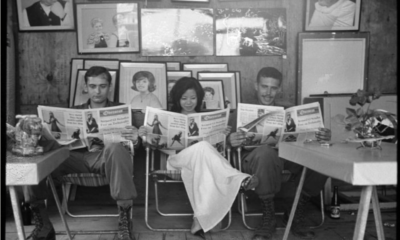
 Politics & Economy2 years ago
Politics & Economy2 years ago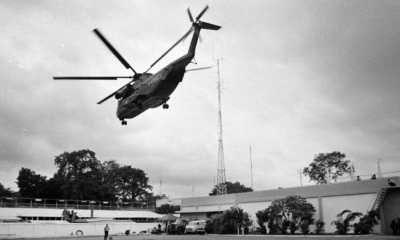
 After 19751 year ago
After 19751 year ago
 ARCHIVES5 years ago
ARCHIVES5 years ago
 Society & Culture5 years ago
Society & Culture5 years ago
 Politics & Economy5 years ago
Politics & Economy5 years ago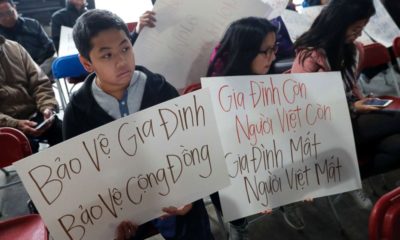
 Vietnamese-America4 years ago
Vietnamese-America4 years ago
 Politics & Economy4 years ago
Politics & Economy4 years ago
